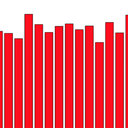Anti-inflammatory and analgesic activities of a novel biflavonoid from shells of Camellia oleifera.
Ключови думи
Резюме
Shells are by-products of oil production from Camellia oleifera which have not been harnessed effectively. The purpose of this research is to isolate flavonoid from shells of Camellia oleifera and evaluate its anti-inflammatory and analgesic effects. The flavonoid was identified as bimolecular kaempferol structure by UV, MS, 1H NMR and 13C NMR spectra, which is a new biflavonoid and first found in Camellia oleifera. It showed dose-dependent anti-inflammatory activity by carrageenin-induced paw oedema in rats and croton oil induced ear inflammation in mice, and analgesic activity by hot plate test and acetic acid induced writhing. The mechanism of anti-inflammation of biflavonoid is related to both bradykinin and prostaglandins synthesis inhibition. The biflavonoid showed both central and peripheral analgesic effects different from aspirin, inhibition of the synthesis or action of prostaglandins may contribute to analgesic effect of biflavonoid. The biflavonoid significantly decreased malonaldehyde (MDA) and increased superoxidase dismutase (SOD) and Glutathione peroxidase (GSH-Px) activity in serum (p < 0.01), revealed strong free radical scavenging activity in vivo. It indicates the biflavonoid can control inflammation and pain by eliminating free radical so as to inhibit the mediators and decrease the prostaglandins. The biflavonoid can be used as a prospective medicine for inflammation and pain.


